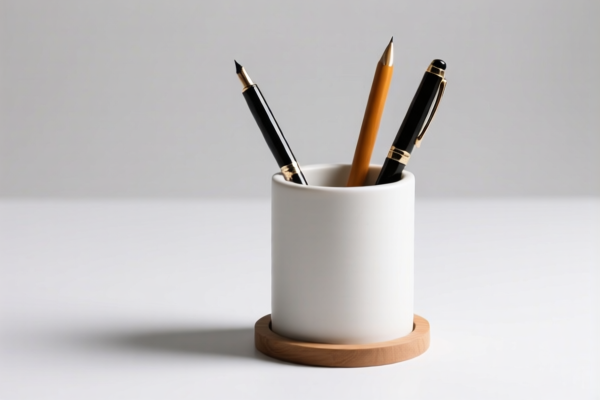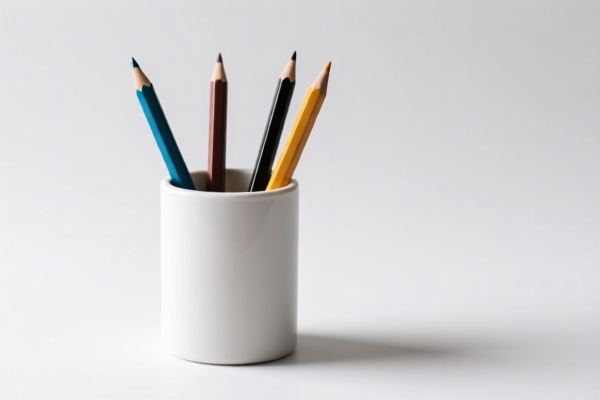| HS Code | Official Doc | Tariff Rate | Origin | Destination | Effective Date |
|---|---|---|---|---|---|
| 9608100000 | Doc | 0.8¢ each + 5.4%+37.5% | CN | US | 2025-05-12 |
| 9608300039 | Doc | 0.4¢ each + 2.7%+37.5% | CN | US | 2025-05-12 |
| 9609908000 | Doc | 37.5% | CN | US | 2025-05-12 |
| 3814001000 | Doc | 61.5% | CN | US | 2025-05-12 |
| 3814002000 | Doc | 61.5% | CN | US | 2025-05-12 |




Writing Pen
A writing pen is an instrument used to apply ink to a surface, typically paper, for writing, drawing, or signing. It is a ubiquitous tool with a long history, evolving from earlier instruments like quill pens and dip pens.
Materials
Pens are constructed from a variety of materials, influencing their cost, durability, and writing experience. Common materials include:
- Plastic: Widely used for disposable and inexpensive pens due to its low cost and versatility.
- Metal: Often used for higher-quality pens, including stainless steel, brass, and aluminum, providing greater durability and a more premium feel.
- Wood: Historically used for pen bodies, still found in some fountain pens and decorative pens.
- Resin: Used in fountain pens and rollerball pens, offering a wide range of colors and patterns.
- Ink: The core component, available in various formulations (water-based, oil-based, gel-based) affecting flow, permanence, and color.
Purpose
The primary purpose of a writing pen is to create marks on a surface for communication, documentation, or artistic expression. Specific applications include:
- Everyday Writing: Note-taking, journaling, letter writing.
- Technical Drawing: Creating precise lines and diagrams.
- Artistic Illustration: Sketching, calligraphy, and detailed artwork.
- Signing Documents: Providing legally binding signatures.
Function
Pens function by delivering ink from a reservoir to a writing point through a controlled mechanism. Key functional components include:
- Ink Reservoir: Holds the ink supply. This can be a cartridge, converter, or integrated chamber.
- Feed System: Regulates the flow of ink from the reservoir to the writing point.
- Writing Point: The tip that contacts the surface, transferring ink. This varies significantly between pen types (ballpoint, felt tip, fountain pen nib, etc.).
- Housing: Provides structural support and protects the internal components.
Usage Scenarios
Pens are used in a wide range of environments and situations:
- Office: For daily tasks, meetings, and document signing.
- School: Note-taking, exams, and assignments.
- Home: Personal writing, journaling, and household tasks.
- Art Studios: Sketching, drawing, and calligraphy.
- Outdoor Settings: Field notes, journaling, and map-making (often requiring pens designed for specific conditions).
Common Types
Pens are categorized based on their ink delivery system and writing point:
- Ballpoint Pens: Utilize a small rotating ball to dispense oil-based ink. Known for reliability and affordability.
- Gel Pens: Use gel-based ink, offering smoother writing and vibrant colors.
- Rollerball Pens: Employ water-based ink and a ballpoint mechanism, providing a smoother writing experience than ballpoint pens.
- Fountain Pens: Utilize a nib and capillary action to deliver water-based ink. Known for their refined writing experience and customization options.
- Fineliner Pens: Feature a narrow, precise tip for detailed writing and drawing.
- Marker Pens: Use a porous tip to dispense ink, available in various tip sizes and ink types (permanent, washable, etc.).
- Stylus Pens: Designed for use with touch screen devices, often with capacitive or resistive technology.
Writing pens broadly encompass instruments used for applying ink to a surface for writing or drawing. They can be categorized based on their ink delivery system and tip type.
The following HS codes are relevant to writing pens, based on the provided information:
- 9608100000: This code covers ball point pens. These pens utilize a small rotating ball to dispense ink. The basic duty is 0.8¢ each + 5.4%, with an additional 7.5% surcharge. After April 2, 2025, the surcharge increases to 30%, resulting in a total tariff of 0.8¢ each + 5.4% + 37.5%.
- 9608300039: This code covers fountain pens, stylograph pens, and other pens. These pens typically use a nib to dispense ink and may have refillable reservoirs. The basic duty is 0.4¢ each + 2.7%, with an additional 7.5% surcharge. After April 2, 2025, the surcharge increases to 30%, resulting in a total tariff of 0.4¢ each + 2.7% + 37.5%.
- 9609908000: This code covers pencils (other than those of heading 9608), crayons, pencil leads, pastels, drawing charcoals, and writing or drawing chalks. This category includes writing instruments that utilize solid graphite or colored pigments. The duty is 7.5%, increasing to 30% after April 2, 2025, for a total tariff of 37.5%.
It is important to note that the classification of a writing pen will depend on its specific characteristics and function. For example, a pen that uses a ballpoint mechanism would be classified under 9608100000, while a pen that uses a nib and refillable ink reservoir would be classified under 9608300039.
Customer Reviews
No reviews yet.